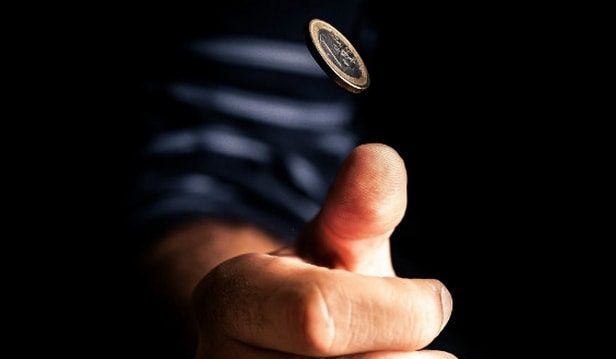“Flippers” – a commonly used term to describe speculators of the property market who buy and subsequently sell their properties after holding only for a short period of time (sometimes even only for days or weeks). This act is usually known as “flipping”.
In fact, this was once a very lucrative “strategy”. In 2011, a staggering 98% of private residential properties (which includes new launch projects) in Singapore were flipped with a profit, within 2 years from the date of purchase. Such gains were averaging around S$259,000. Back in 2013. Things were still looking good for the flippers as 61% of such transactions made profits. Even though the average gains dropped by 16%, around S$151,000.
However, fortunes began to change. In 2014 and 2015, there was a reversal in this trend as only a total number of 30 non-landed residential properties. With a holding period of 2 years or less were transacted.
If we were to look at transaction numbers, there were approximately 2,000 more such transactions in 2011. What’s even worse, out of those 30 transactions, only 5 of them were profitable. The remaining 25 transactions all saw losses at an average of S$373,000.
The calculation of profit and loss was based on the difference between the purchase and selling prices.It also includes the prevailing sellers’ stamp duty (SSD) rate which is payable by sellers.
On the other hand, investors bought 4 out of the 5 profitable units during the property market’s peak period in 2013. And made more than decent gains, averaging about S$217,000. One of them is a residential unit at Kemaman Point.
In 2013, someone bought the property for S$697 and then resold it for S$1,006 in March 2014. Similarly, at another development known as Santa Fe Mansions, someone bought a unit at the peak in 2013 for S$1,032 per square foot. And changed hands for S$1,247 psf in 2014. This clearly shows that investment opportunities still can be found even during peak periods in the property market.

Despite a challenging property market in 2014 and 2015, 94% of non-landed residential properties were still making an average profit of $455,000, or a gain of 42%. The holding period for these sellers was an average of 7.7 years.
Although the amount of unprofitable transactions increased from 2% between 2011 and 2013 to 6% in 2014 and 2015. They still barely had any impact on Singapore’s property market. As they are still a small group among the property sellers.

According to research, the timing of purchase indeed contributed to greater profits. They have gained anywhere from more than 90% to as much as 102% in profit on homes purchased between 2003 and 2005.
If you recall, this was the period when we experienced the aftermath of the 911 terrorist attack and the ongoing SARS and Iraq War. Which indirectly caused a steep decline in property prices. In a similar situation back in 1998 when we experienced the post-Asian financial crisis, property owners. Those who purchased a unit back then are also enjoying an average gain of 92%. Which equates to more than S$500,000. That was the time when property prices plunged by 42% from the peak of 1996 to late 1998.
Well, It’s certainly a temptation to wait for opportunities like that to enter the market. However, during these times Singapore was experiencing high unemployment. And plenty of job uncertainties when even rock-bottom property prices didn’t attract property buyers.
That was the reason why the government took action to reduce the cash downpayment to only 5%. And also raise the Loan-To-Value (LTV) limit to a high 90%.

The biggest loss mainly came from properties in the prime districts or the Core Central Region (CCR) in Singapore. These residential units (9 in total) were bought in 2006, incurring a loss of S$1.46 million (20% loss) on average. Out of the 9 properties, 4 of them were from St Regis Residences and another 2 from Cairnhill Crest. The rest comes from other parts of the CCR. This is certainly a clear testament. The property cooling measures have affected the luxury property segment in Singapore the most.
Over the past couple of years, we’ve seen flippers coming more from the shoebox apartments. The main reason is that it has affordable pricing and low entry capital for most investors.
However, they are not avoiding losses either. Up to this point, 3 out of 4 shoebox units sold in 2014 and 2015 suffered losses ranging from S$5,840 to S$49,080 (between 1% to 8%). As their holding period was mainly 2 years or even less. Apparently, these transactions could have been profitable if not for the SSD which the sellers had to pay.
Apart from these exceptional cases, a majority of 95% of shoebox apartments transacted in 2014 and 2015 still made profits, an average of S$118,000 or 21% gain. These units were purchased between the period of 2007 and 2013. Shoebox apartments in city-fringe locations yielded the most profits, averaging S$130,000 or 24% price gain.
In 2nd place are those in the mass-market areas where we’ve seen price gains at around 20%, or S$106,000. Not forgetting the high-end property segment where these unit types made an average profit of 16% ($116,000) as well.

From this report, you can clearly understand that profiting in real estate investments is not just about timing. But also the economic situation and the holding power that you have.
Times have indeed changed and it requires investors today to be more prudent on what they are investing and the risk factors involved. Because of the seller’s stamp duty, we are seeing the end of the era for flippers.
However, seeing real estate as a long-term investment option is certainly still profitable in general.


